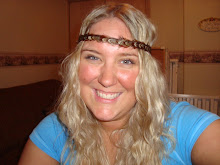- 119
- 136-41
- 147
- 148
- 153
- 156
- 163
- 165
- 187
- 214-5
- 223
3 Apologists:
- Keats: Negative Capability, Almost a Remembrance, The Vale of Soul Making
- Arnold: Lit was a substitution for religion, touchstones
- Pater (on this site pgs 35-7 , although the last 5 lines or so of his essay aren't included): 'Art for art's sake', 'The only things worth studying are the things you don't have to justify as being useful'- they add quality to your moments
Book and Heart
DQ
Critics:
- Longinus: sublime
- IA Richards: pseudo-statement, hypothetical
- Julia Kristeva: intertextuality- 'every work of lit is in conversation with all others'
- Oscar Wilde: Life is an imitation of art
- Samuel Fish: humanities and 'that which we see with poetry seeing eyes'
- William Blake: imagination, visionary
- Mikhail Bakhtin: dirty mind, carnival, lit is body comedy
Idea of Order: Ramon Fernandez to end
~~~~~~~~~~~~~~~~~~~~~~~~~~~~~~~~~~
- DQ slices_______? A- wine skins
- N. Frye's anagogic level: ______ is the _____ of nature (pg 145)? A- Man, container
- H. Bloom compared DQ to _____, and Sancho Panza to ___________? A- Hamlet, Falstaff
- Frye suggests that as myth moves to irony __________ moves to ________. A- metaphor, simile
- Main theme from B and H: innocence to _________? A- experience
- 'Not the fruit of the experience, but the ___________ in the end" ~ Walter Pater A- experience
- M. Arnold said: "criticism of life, crisis of __________?" A- Faith
- Frye compares DQ to ________ on page 225? A- white knight from Alice in Wonderland (Lewis Carroll)
- Arnold: "what power does the best poetry have"? A- inform, sustain, delight
- Filling up is __________, emptying out is _________? A- pleurousis, kenosis
- Is Frye a half empty or half full guy? A- half full likes comedy and romance
- Who does DQ believe to 'roam free' during the Golden Age? A- virgins
- Two great forms of undisplaced myth in N. Frye? A- Apocalyptic (good) and demonic (bad)
- TH Gastor's 4 phases in seasonal cycle:
- Mortification (Autumn)
- Purgation (Winter)
- invigoration (spring)
- Jubilation (summer)
- What does 'What's the difference mean?' A- 'I don't care!' deconstructionist
- DQ is a mirror held up, not to nature but to _______? A- the reader
- (pg 187-93) 3 stages of the mythos of summer/ romance? A- 1) conflict, 2) death struggle, 3) discovery
- (pg 148) "in poetry, physical is actual as opposed to the _______?" A- hypothetical- not real
- Negative god appeals where? A- demonic (chpt 3)
- DQ's squire is named, and it means? A- Sancho Panza and belly
- Structural principle of lit are derived from _________ and _________? A- anagogic and archetypal
- In which seasonal phase does the 'sense of relief' come on new year's? A- jubilation (#4)
- (pg 162) The top half is the world of ______________, bottom is the world of _________? A- Romance, realism
- Keats believed that poetry should __________ in excess? A- surprise
- The word demonic comes from the word _______? A- daemon, meaning soul
- What season does DQ fit into? A- all of them (all of the above)
- What Frye page is the 'woo woo' page? A- 119
- "In the anagogic phase, literature imitates the total dream of man, and so imitates the thought of a human mind which is at the ____________ and not at the center of its reality." (pg 119) A- circumference
- 4 master troupes?
- metaphor
- metonymy
- synedoche
- irony
- Negative capability: 'The artist becomes _______, so the work becomes ________." A- blank/ empty, everything ex) Shakespeare
- What mode would innocence be placed in? A- myth

No comments:
Post a Comment